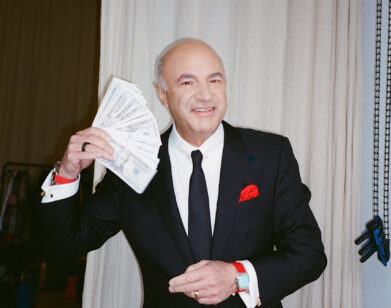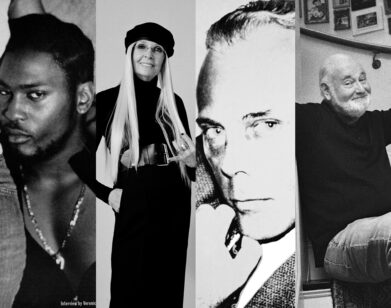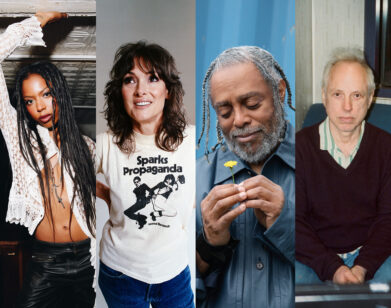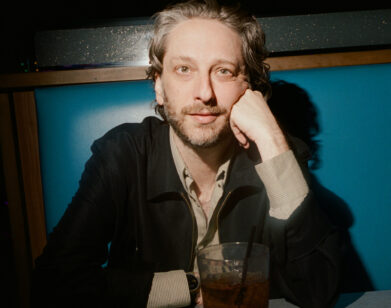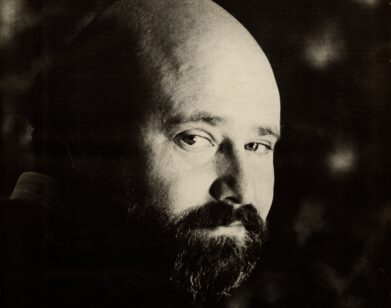The Director’s Director
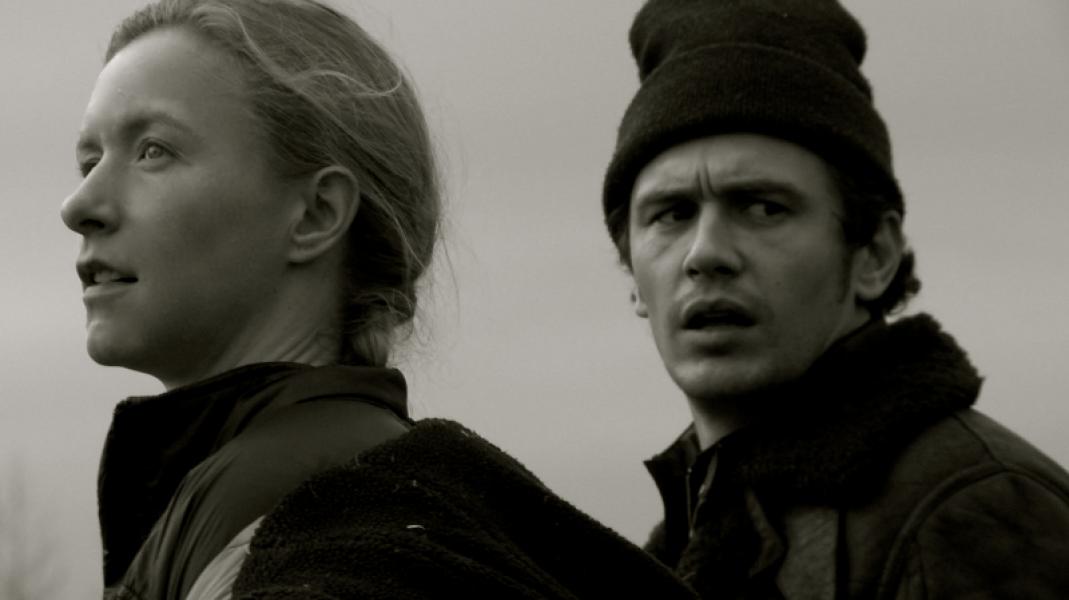
ABOVE: CHRISTINA VOROS AND JAMES FRANCO
For a documentary by a second-time director, there is a great deal of commotion outside the world premiere of The Director. Fashionistas, film buffs, and celebrity fans are all gathered outside the SVA theatre in New York, waiting to enter the cinema. Then James Franco, dressed in Gucci, steps out of a car, and you begin to understand what’s going on.
Filmed by director and cinematographer Christina Voros over 18 months, The Director follows Frida Giannini, the 41-year-old creative director of Gucci, as she produces a Fall menswear show, travels to China, and begins designing a new Spring collection. Voros intersperses grainy, black and white Super 8, with digital footage to illustrate Giannini’s respect for Gucci’s heritage and her plans for its future. Franco, whom Voros met through a professor at NYU film school, makes an appearance in the first act (he is, after all, the face of Gucci Homme) and produced the film.
The day after the premiere, Voros is sitting in a room at the Hilton in Chelsea, New York, ready to answer questions about her biggest film to date.
EMMA BROWN: Did you always know that you were going to seperate the film into three acts?
CHRISTINA VOROS: No. The film sort of dictated its form. I think our first rough cut was four hours long. As it began to contract, these three distinct moods seemed to be revealing themselves. I said to our editor, “Each of one these chapters ends with a pause. It kind of feels like a play.” And that’s where it came from. As a filmmaker, your first responsibility is to teach your audience how to watch your movie. There’s something about identifying that three-act structure that allowed people to place themselves, and to guide attention towards the themes of each of those sections, in a way that I think allows you to digest the film more easily.
BROWN: Do you need to be a perfectionist to be a fashion designer?
VOROS: I think you need to have a very strong intuition and a very strong sense of your own vision and style. On the flip side, you need to be flexible and pragmatic in a problem-solving way, so as not to close the door on something that may be a wonderfully happy accident. One of the things that’s striking about Frida—there’s a designer review that I was in once, and she said something like, “A bad idea can never be changed into a good idea.” It’s easier, if you sense something is not going in the right direction, to cut it off at the knees then, instead of trying to shape it into something. So I think perfectionism is important, but I think more important is a real sort of creative inner radar, that you can trust and an intuition that you can allow to guide you.
BROWN: Do you think that a bad idea can ever be turned into a good idea?
VOROS: A bad idea that’s turned into a good idea is probably not as good of an idea as a good idea that’s a good idea from the get-go.
BROWN: Gucci is a very well-known brand with a very controlled image; did you ever hesitate about making the documentary for fear that they would intervene?
VOROS: I was expecting the same thing, and it didn’t really work out that way. I think part of it is that certain things, as an outsider looking in, seem more surprising or unusual than it does to someone who lives in this world all the time. The frankness with which models are discussed, or the casting process, to an outside observer, can look kind of harsh. But if that’s your world, and that’s your business, then you know how it is—there is something that you are looking for that someone either has, or they don’t. And maybe you can work with them, and maybe you can’t. So, there were certain things that I was actually surprised that I was given access to. There was never a moment where I was asked to put the camera down. There was never a moment where I was told “you can’t go behind that door.” It’s a very orderly universe, and there’s a tremendous amount of structure in the way the company is organized—in the way decisions are made. One of the things that surprised me the most is you would expect the week leading up to the show to be this totally chaotic maelstrom of stuff. But it’s such a well-oiled machine: the Wednesday before, it’s castings, and then you do a fitting like this, and then the models come back the next day, and then the hair and the makeup tests. After I did two shows, I was like, “Oh yeah, it’s Wednesday!” You get the rhythm. We also filmed over a tremendous period of time. In the beginning, I felt that there was a lot of attention on us, that people were hyperaware of what was being said or done in our presence. Over the passage of time, that kind of fell away and people realized that we were trying to make a film that was purely observational, and that was not reality TV. I wasn’t going to direct people or ask them to enter the room again. We weren’t going to interfere with anything that was going on. I think once they felt that they understood my approach more, everything became a lot more relaxed.
BROWN: Would you still have made the documentary if you had come across closed doors and Gucci had limited your access?
VOROS: My goal in making this film was always to do a portrait of an artist. I wasn’t trying to dig up some seamy, dark secret about the fashion industry; that wasn’t the film I was making. It’s one thing to be doing a documentary that’s an exposé, or that has a political agenda, or is more on the side of news. When you’re doing a portrait of someone, or someone’s life, you have a certain responsibility because you are asking somebody else to give you their life as a medium for your art. I’ve worked with some filmmakers as a cinematographer, who have this [attitude of], “Well, they’re not giving us enough access, or I’m going to make them give us more access, or we’re not making this movie about them.” You’re making the movie for you, too. You need to work with that person and give them what they need to feel comfortable. If somebody came up to you on the street and asked to go through all your drawers, why would you let them do that? A documentary is the same; someone needs to trust that you’re not going to misrepresent them. I was really pleased with the way that Frida responded to the movie, because there were moments when a different person would have said, “I don’t have makeup on in that shot,” “That’s not flattering,” “My hair is messy,” “I don’t like what I said there.” And she felt like it was a very accurate representation of her; that it was sensitive to the nuances of the collaborative effort that is involved. When I do a film about a person, secretly you hope that they see themselves in your film.
BROWN: Do you find that you can’t help but like your subject?
VOROS: Not always. I’ve done projects where I get to the end of the film and I like them less. There’s always a danger when you become embedded in someone’s life; you really need to work hard to maintain objectivity. Documentary is not truth. Documentary is a version of truth that is shaped by an infinite number of decisions, from when you turn the camera on, to wear you point it, to what you’re hearing, to how close you are—and that’s before you start editing. So, there is a danger of getting too close to your subjects, because then you can start going, “Oh, well, I don’t want to include that, because that makes her sound mean, and I don’t want her to sound mean.” Editing a film is a lot like a poem. Every shot needs to count. Every shot and every choice says something. Luckily enough, in this film, I came away from it with an even deeper respect and admiration for Frida than when I began. She’s a very private person, and she’s very humble, and is not this big, flamboyant look-at-me personality. She’s sort of an anomaly in the fashion world. She’s very understated, and incredibly confident, and very appreciative of her collaborators and of the history of the brand that she is now charged to helm. You would think for a good subject you want someone who is big, and dramatic, and in your face, and part of what’s really amazing about Frida is the juxtaposition of her nature and the nature of the industry that she’s in.
BROWN: I found it interesting that she never wanted to have her own brand; she always wanted to be part of something established.
VOROS: It’s not a usual instinct. Even those people who are at the head of a label, you always kind of get the feeling that if they had their druthers, their name would be on a storefront on Fifth Avenue. And she doesn’t want that. She feels a tremendous amount of responsibility to being part of this thing that is bigger than her.
BROWN: Is making a documentary more intimidating than making a fictional film? Even though it is just one interpretation of the truth, people are more likely to view it as “this is how things are.”
VOROS: Yes. I think you need to be aware of the fact that what you are doing is going to be interpreted as absolute truth. It’s even more complicated now, because now there are all these hybrids, and “reality TV.” I mean, reality TV is not reality, and it’s barely TV. I was on a shoot recently where the subjects didn’t really understand the difference between documentary and reality TV, and so they kept staging things. I think that it’s more difficult also because there’s no map; on a narrative you have a script, you have storyboards, you have a schedule, and you have actors. You direct people to do things, and if you’re lucky, they do them.
BROWN: The film opens with a menswear show, which is not often the focus in fashion. Why did you choose to start with men’s fashion week?
VOROS: I love seeing Frida with those guys; you get a sense of her that is different, watching her work with the men’s collection. The men’s show is a totally different vibe than the women’s show. It’s not quite as important, in terms of the fashion world, and the guys, like she says, always look like the little brothers of the female models—they’re boys. You see them backstage, and they’re smoking, they’re on their iPhones, and they’re goofing off. They’re kids. The women tend to be much quieter and more intense. They are more mature; it’s like, “Oh my God, you’re only 15 or 16, and you look like this amazing extraterrestrial goddess.” I was trying to make a film that was representational of not just a collection or a single process, but tried to be representational of what a year in this woman’s world is. I thought it was important to juxtapose the energies of those different collections.
BROWN: You mentioned that the idea for the film came from your friend and the producer James Franco and his relationship with Gucci. Did he suggest it to you out of the blue? Or were you talking about wanting to make a documentary?
VOROS: No, he literally had come from a screening in Rome of La Dolce Vita where he’d been with Frida. We’d just done this film on Saturday Night Live, that was a vérité portrait of the creative process, and he showed up the first day of the first feature I was shooting for him, actually, and said, “I think we should do a movie on Frida Giannini.” That’s kind where it began. It was just and idea that he had, and I came from a background of fashion and documentary, and we’d worked together a bunch, so he said, “I think you should go to Italy and shoot this.” I owe a lot of my adventures to crazy ideas that James brings up.
BROWN: You weren’t suspicious—”Why don’t you want to make it?”
VOROS: Well, he does want to make it. I think when this first started, two years ago, we didn’t really figure out what our roles were. It was like, “Let’s go make this movie together, somehow.” Then I went to the first shoot, and then the second shoot, then I was kind of producing, and checking in with him, and he’d give me feedback—he gave me a tremendous amount of freedom to just run with it. In the beginning, I don’t even think it was discussed whether I’d be shooting it, or I’d be directing it. One of the nice things about working with him, and working with his company, Rabbit Bandini, is that they’re just really good at bringing good, wonderful, creative, crazy people together and doing things that aren’t definable. “Let’s make a movie, and figure out what the credits are later, because what’s important is making the movie.”
BROWN: Did you read the article that Buzz Bissinger wrote about his Gucci addiction?
VOROS: [laughs] Yes. Well, I got it sent to me by a friend who was joking that it was sort of the hybrid of the two documentaries that I’d done this year.
THE DIRECTOR IS CURRENTLY SCREENING AT THE TRIBECA FILM FESTIVAL.

